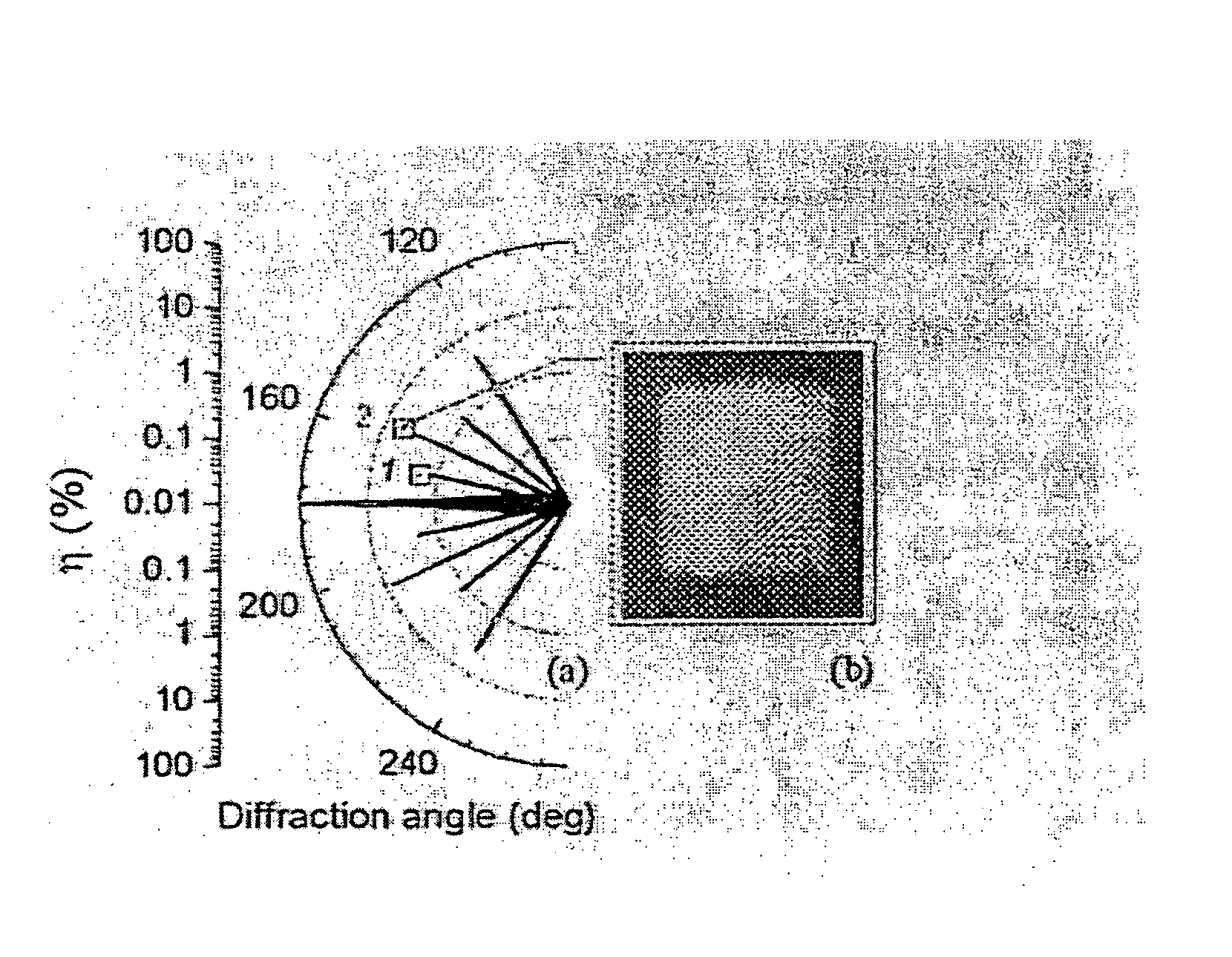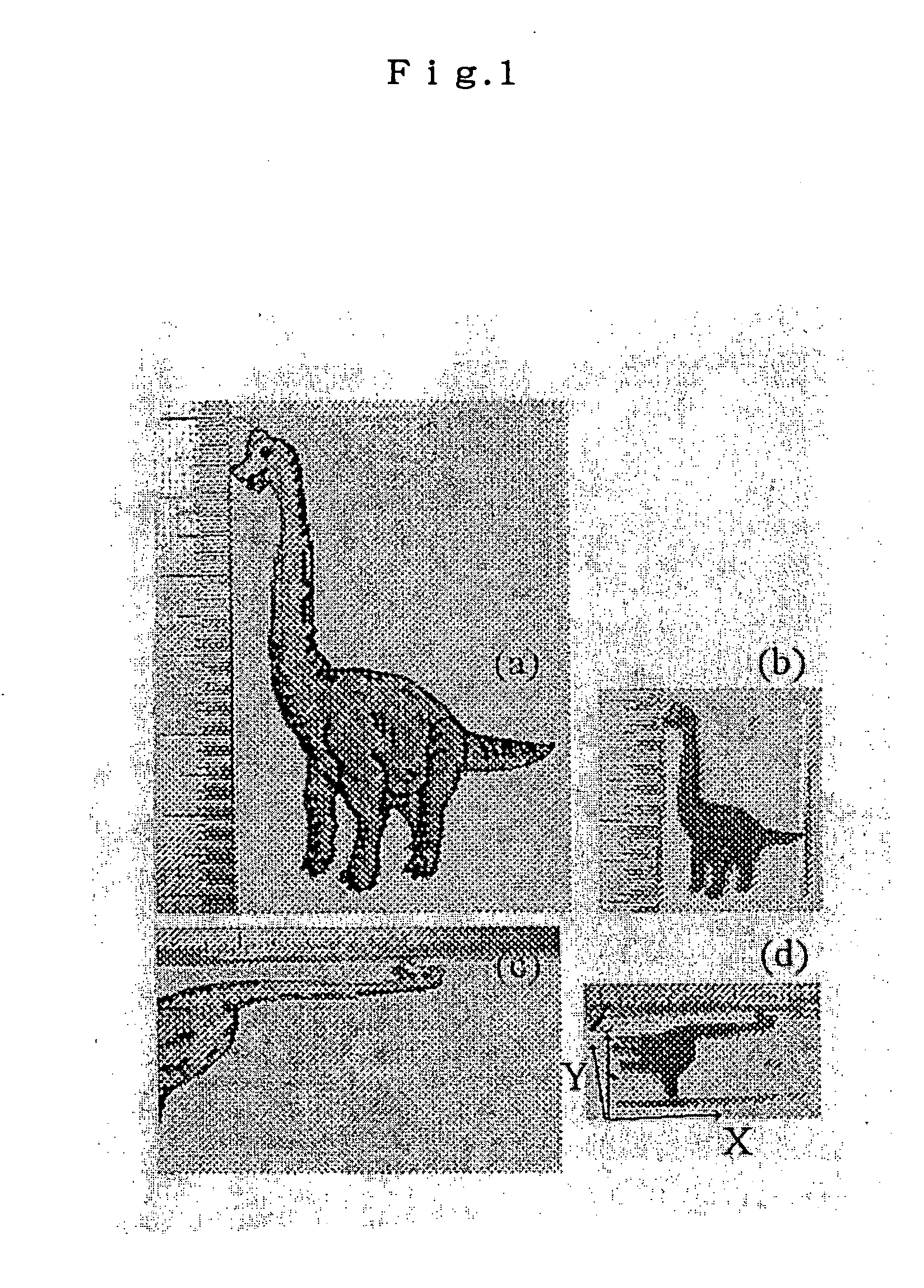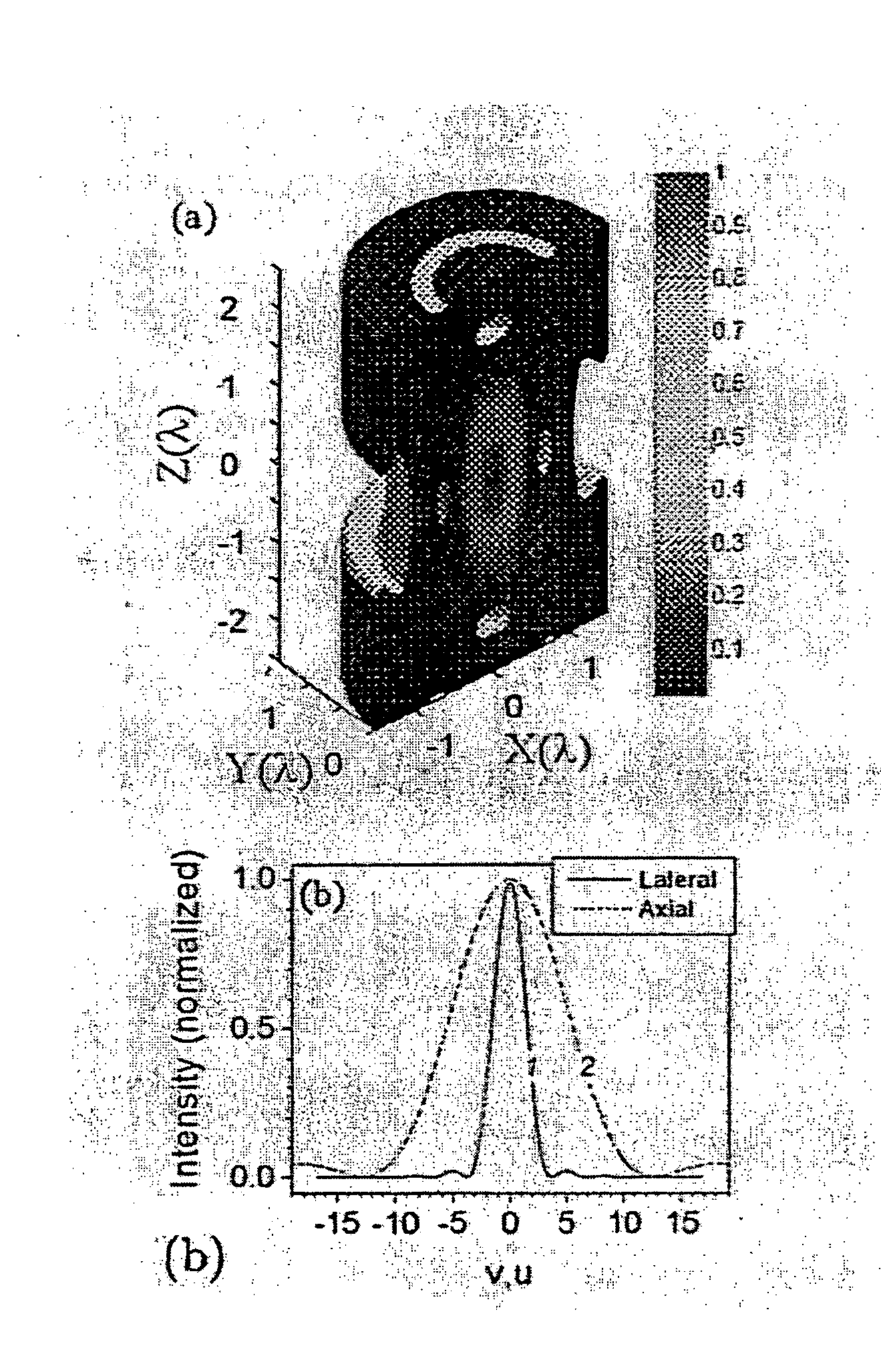Micro-Fabrication Method
a micro-fabrication and method technology, applied in the field of micro-fabrication methods, can solve the problems of unadvanced research on the utilization of self-organization behavior, the process limit of diffraction poses a grave obstacle to the development of nano/micro-fabrication,
- Summary
- Abstract
- Description
- Claims
- Application Information
AI Technical Summary
Benefits of technology
Problems solved by technology
Method used
Image
Examples
examples
[0036]Next, the present invention will be explained in further detail with reference to an example; however, the invention is not limited by the following example.
[0037]First, an example of the picture isotropic shrinkage in the film plane by heating a polystyrene film used as a recording material and a picture drawn thereon at the glass transition temperature Tg or higher will be described.
[0038]A4 size polystyrene film (manufactured by Ukita Corp., manufactured by Acrysunday Co., Ltd.) of 0.2 mm thickness was used as a recording material and cut by 65 mm vertically×50 mm laterally. After drawing a picture with an oil based marker on the polystyrene film as shown in FIG. 1(a) so as to provide a sample, a heat treatment was carried out at 130° C. for 2 minutes. The glass transition temperature Tg of the polystyrene is 100° C. The states of the sample before and after the heat treatment are each shown in (a) and (c), and (b) and (d) of FIG. 1. (a) and (c) of FIG. 1 are of the same sc...
PUM
| Property | Measurement | Unit |
|---|---|---|
| beam spot size | aaaaa | aaaaa |
| size | aaaaa | aaaaa |
| size | aaaaa | aaaaa |
Abstract
Description
Claims
Application Information
 Login to View More
Login to View More - R&D
- Intellectual Property
- Life Sciences
- Materials
- Tech Scout
- Unparalleled Data Quality
- Higher Quality Content
- 60% Fewer Hallucinations
Browse by: Latest US Patents, China's latest patents, Technical Efficacy Thesaurus, Application Domain, Technology Topic, Popular Technical Reports.
© 2025 PatSnap. All rights reserved.Legal|Privacy policy|Modern Slavery Act Transparency Statement|Sitemap|About US| Contact US: help@patsnap.com



